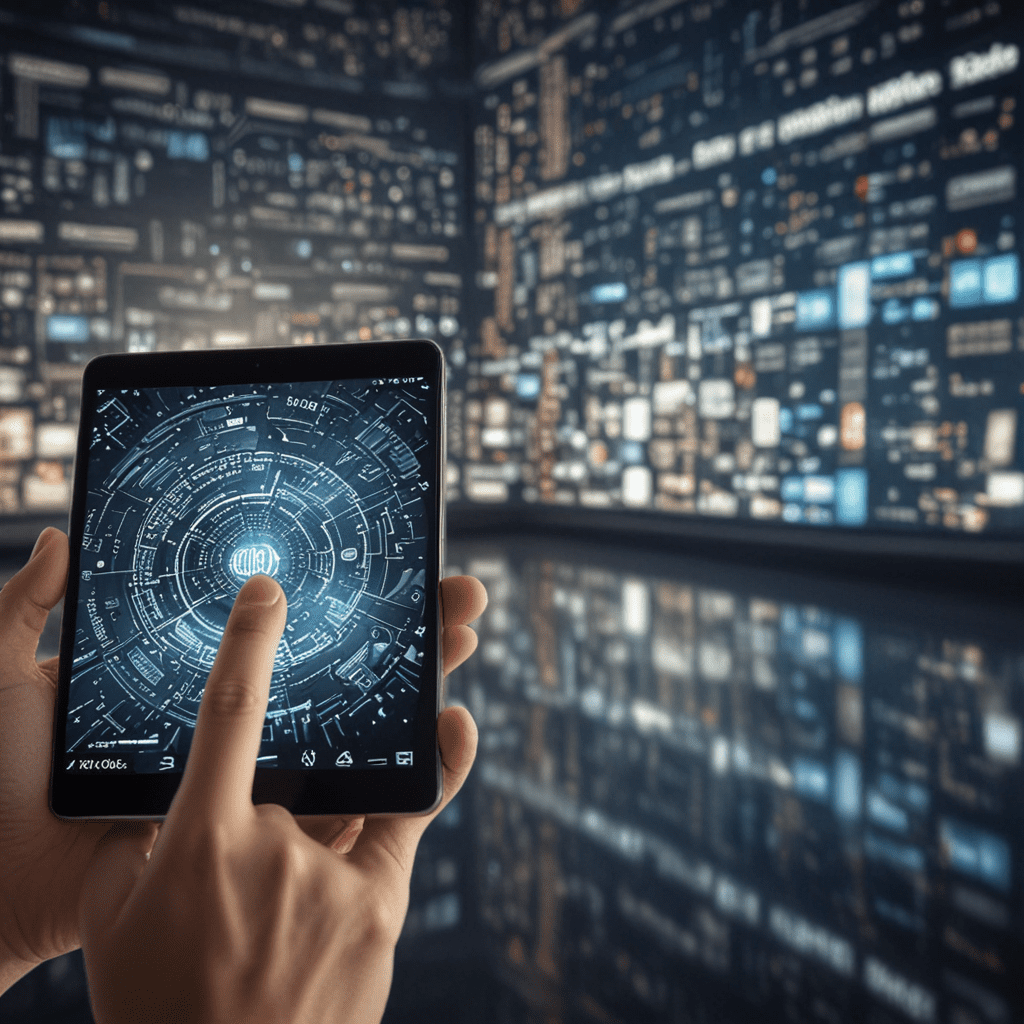
1. Introduction: The Dawn of Spatial Computing
The advent of spatial computing marks a transformative era in mobile app development, offering immersive and enhanced user experiences. This technology empowers users to interact with the digital world in a more natural and intuitive way, bridging the gap between the physical and virtual realms. As spatial computing continues to advance, it presents a spectrum of opportunities for innovation and market growth.
2. Definition and Key Concepts of Spatial Computing
Spatial computing encompasses technologies that enable digital content to be perceived as existing in the real world. It seamlessly integrates virtual and augmented elements into the user's physical environment. Key concepts of spatial computing include:
- Augmented reality (AR): Superimposes digital information onto the user's view of the real world.
- Virtual reality (VR): Creates a fully immersive digital environment that replaces the user's physical surroundings.
- Mixed reality (MR): Combines elements of AR and VR, allowing users to interact with both the real and virtual worlds simultaneously.
- Location-based services (LBS): Utilizes GPS and other location data to provide context-aware mobile apps.
3. Immersive and Enhanced User Experiences
Spatial computing technologies offer unparalleled immersive experiences that captivate users and enhance their engagement with mobile apps. AR and VR applications can transport users to virtual worlds, enabling them to explore, interact with, and learn from digital content in a realistic and interactive way. LBS, on the other hand, provides users with location-specific information and services, making their physical surroundings more informative and accessible.
4. Augmented Reality (AR) and Virtual Reality (VR) Applications
AR and VR technologies have found widespread adoption in various industries, including gaming, entertainment, education, and healthcare. AR apps overlay digital information onto the user's physical environment, enhancing their perception of reality. VR apps, on the other hand, immerse users in fully synthetic environments, providing immersive and engaging experiences for entertainment or training purposes.
5. Geospatial Applications and Location-Based Services
Geospatial applications and LBS utilize spatial data to provide location-aware services and information. These applications include GPS navigation, mapping, and location-based search. LBS can also be used for marketing and advertising, enabling businesses to reach customers based on their physical location.
6. Impact on User Interfaces and Interactions
Spatial computing revolutionizes user interfaces by enabling natural and intuitive interactions. AR and VR technologies allow users to interact with digital content using gestures, voice commands, and spatial navigation. Haptic feedback and other sensory enhancements further immerse users in the digital experience. These advancements enhance usability, accessibility, and overall user satisfaction.
7. Advanced Data Processing and Machine Learning
Spatial computing demands advanced data processing capabilities to handle the vast amounts of data generated by sensors and spatial interactions. Machine learning algorithms play a crucial role in interpreting this data, recognizing patterns, and making real-time decisions. These capabilities enhance spatial computing applications, enabling them to provide personalized experiences, optimize performance, and respond intelligently to user input.
8. Challenges and Limitations of Spatial Computing Integration
Despite its transformative potential, spatial computing integration faces certain challenges. These include:
- Hardware limitations: Mobile devices may need to be equipped with specialized sensors and processing capabilities.
- Power consumption: Extended use of AR and VR applications can strain battery life.
- Privacy concerns: Spatial computing technologies collect spatial data, which raises privacy considerations.
- Accessibility: Designing for spatial computing requires attention to accessibility guidelines for users with disabilities.
9. Opportunities for Innovation and Market Growth
Spatial computing integration presents a wealth of opportunities for innovation and market growth. Developers can capitalize on new possibilities in fields such as:
- Gaming and entertainment: Immersive AR and VR experiences enhance storytelling and gaming.
- Education and training: Spatial computing enables interactive learning simulations and virtual field trips.
- Healthcare: AR and VR applications facilitate remote surgeries, medical training, and patient rehabilitation.
- Retail and e-commerce: Spatial computing allows customers to visualize products and make purchases in an immersive environment.
10. Conclusion: The Future is Spatial
The future of mobile app development is inextricably linked to the integration of spatial computing technologies. As devices become more powerful and accessible, spatial computing will continue to redefine user experiences, drive innovation, and reshape the way we interact with the digital world. By embracing spatial computing, developers can unlock the full potential of mobile apps, creating immersive, engaging, and transformative experiences.
FAQs
What is the difference between AR and VR?
- AR overlays digital content onto the user's real-world view, while VR creates a fully immersive digital environment.
What are the benefits of spatial computing?
- Immersive experiences, enhanced user interfaces, location-aware services, and opportunities for innovation.
What are the challenges of spatial computing integration?
Hardware limitations, power consumption, privacy concerns, and accessibility considerations.
- What are the future applications of spatial computing?
- Gaming, entertainment, education, healthcare, retail, and e-commerce.

